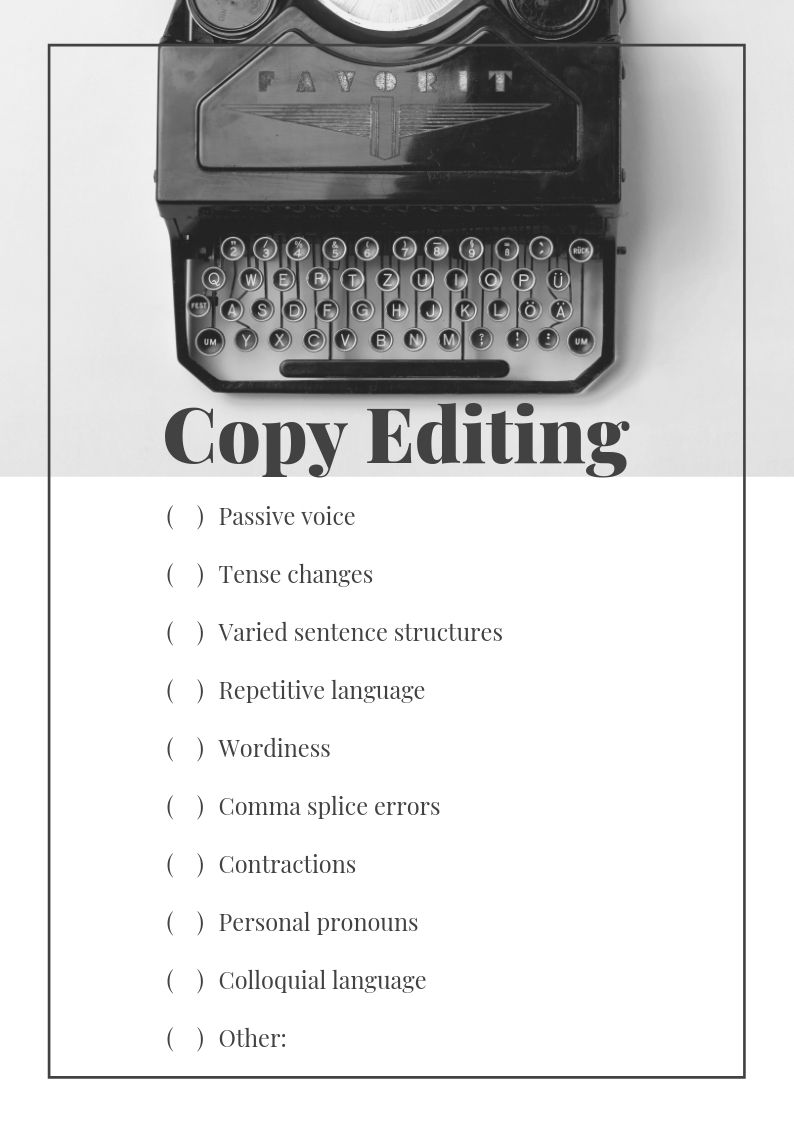20 Editing
This section offers suggestions for how to effectively edit your thesis. Editing is a key part of the writing process, which is often neglected.
William Zinsser advises that “Rewriting is the essence of writing.”[1]
There are two forms of editing
- Substantive editing of content, where the arguments, evidence, logic, structure, and organization of the piece of writing are assessed. This macro-editing should come first in the editing process.
- Copy editing of grammar, word choices, repetition, and so on. Once all major substantive reworking is done, copy editing ensures the writing is clear, concise, and grammatically sound.
Tips for substantive editing
- Once you have finished writing a chapter, paper, or section, take a break. Avoid starting to edit a piece of writing you have just completed.
- Make a list of the top three overarching arguments in the chapter, section, or thesis.
- Create a reverse outline. Take the piece of writing and reduce it to the essential argument of each paragraph or section. Write out the argument of each paragraph and edit for the structure and presentation of your ideas.
- Do these ideas and arguments flow logically?
- Has the reader been given the previous knowledge they need to understand subsequent concepts/assertions?
- Could the ideas be better structured to make a more convincing argument?
- Go paragraph by paragraph and check that each argument is well supported with evidence.
- If possible, have someone unfamiliar with your topic read your writing to see where you may need to explain jargon or concepts more clearly. As a general rule of thumb, your thesis should be able to be understood by the “knowledgeable, but uninformed” reader – like an upper year undergraduate student in your program.
- Sometimes, it is easier to use the track changes and comments functions to suggest changes on your first re-read as you self-edit. This can allow you to go back through a second or third time and think more intensively about how to implement those changes. Flagging something as “confusing”, “unclear”, or “needs more explanation” allows you to return to it later without interrupting the editing process. Making notes to yourself in the document as you edit can be a useful way to keep track of changes that need to be made.
Tips for copy editing
- Take your time, and leave yourself lots of time to edit – editing should be the lengthiest part of the writing process. It can also be the most tedious and difficult, so create small goals and build rewards and breaks into your editing process.
- Change the format of the document so it looks unfamiliar. Switch the font, make the font bigger, or change the background colour. Such changes will allow you to more easily see typos, misspellings, word omissions, and other things that may otherwise go unnoticed. Consider editing your document in PDF form for one pass-through. You may notice things you were not picking up on before.
- Create a checklist of your common grammar mistakes, and do a pass through of your writing looking for each one in turn. This may be time consuming, as you will read through the document several times, but it is the best way to catch the majority of your errors. See the checklist below as a place to get started.
Edit together! Set up an editing group
Having others read your work allows them to see typos you have gone blind to, and to check that your explanations are clear. Editing others’ work is also a good way to learn what mistakes to look for in your own. Consider forming a small group with students who are at a similar stage in the writing process.
Copy editing checklist
Using a copy editing checklist can be helpful because it ensures a thorough and systematic review of written content, which reduces errors and improves the overall quality of your work. Use a copy editing checklist such as the one below during the editing stage of your thesis.

- William Zinsser, On Writing Well (New York: HarperCollins, 2006), 4. ↵

